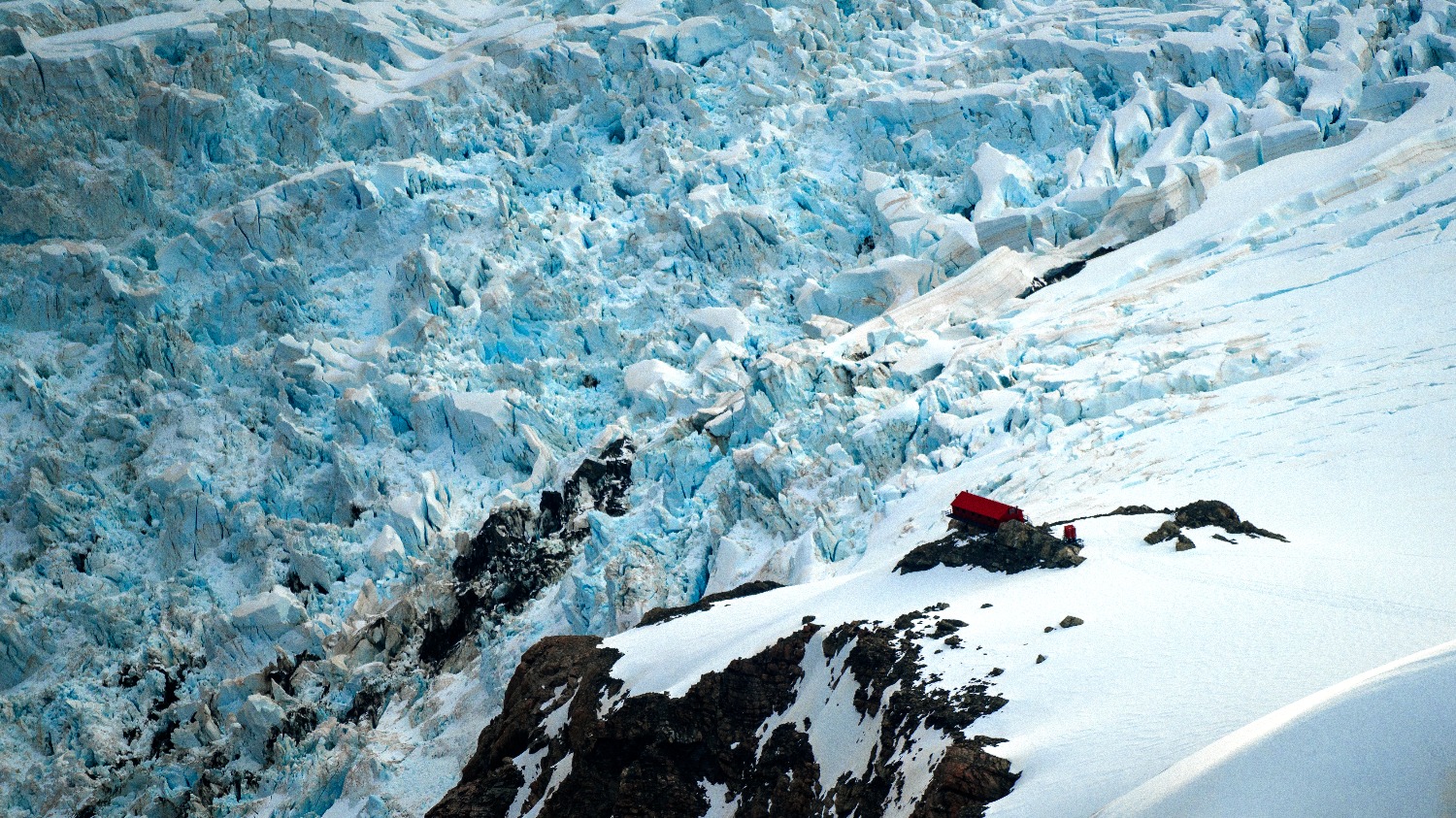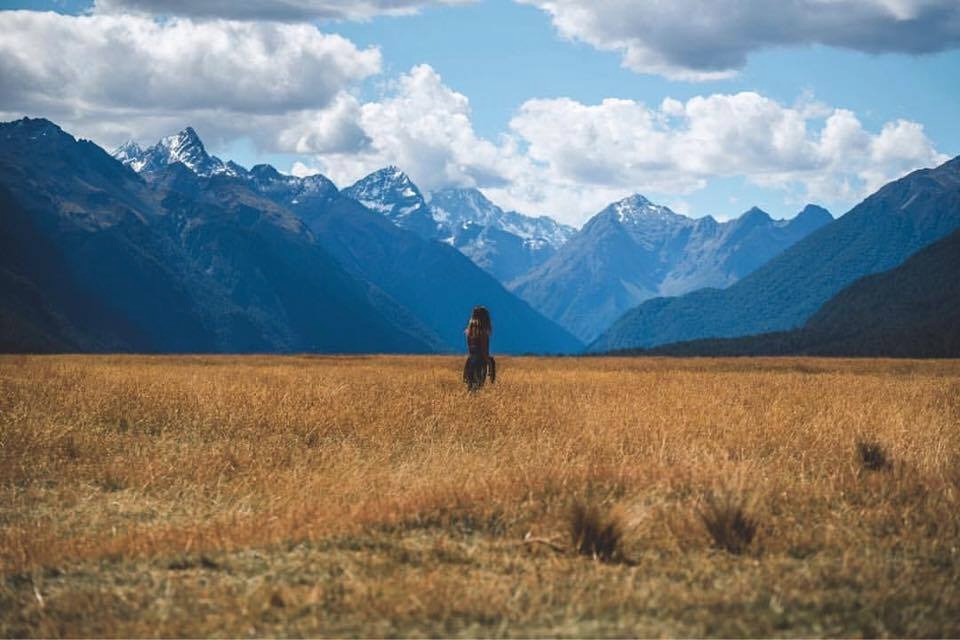New Zealand

As I flew the short, one-hour connecting flight from Christchurch to Queenstown, the beauty of New Zealand finally sunk in. Never has a small, cramped airplane heard so many gasps of excitement from its 50 or so passengers pressing their cameras up to the Plexiglas airplane window. We flew in between tight mountain ranges, over seemingly endless lakes, and along grassy pastures where over 25 million sheep call home. In no time at all, I was standing outside of the smallest airport I’ve encountered, in the smallest airport parking lot I could dream of, and underneath the glorious, snow-capped Southern Alps, more commonly known as The Remarkables.
The South Island of New Zealand has roughly 1 million residents, about the population size of San Jose, California, and the island is about the same size as California itself. In a sparsely populated nation surrounded by 12,000-foot mountain ranges, fiord lands with enormous glaciers and waterfalls in the same view, and a total of 33 lakes, where does a traveler begin?
My family and I chose to start our journey in Queenstown, New Zealand’s quintessential resort town, lovingly referred to as “The Adventure Capital of the World” and the central hub for many possible day trips. It sits under The Remarkables mountain range and right on Lake Wakitipu. Down every cozy street there are endless opportunities to sign up for said adventure. From skydiving to bungy jumping and jet boating to lake cruises, they have something for everyone and with little to no preparation. For example, during one of my unplanned days I ventured into town and, on a complete whim, decided I would go paragliding that afternoon. An hour and a steep ride up the gondola later, I had viewed all of Queenstown, Lake Wakitipu and the surrounding mountain ranges from a bird’s eye view.
Not only are there boundless opportunities to jump off heights and zip through rivers, but the surrounding towns are filled with wineries, quaint streets sprinkled with unique boutiques, and restaurants that serve nothing but fresh food and grass fed meat.
But somewhere along the way I stopped focusing on all the things I could consume during my trip in New Zealand, and started focusing on seeing these mind shattering sights through a local’s eyes. What does a Kiwi see while breathing in the view?
If I learned anything during my trip, I learned that the vast beauty of its landscape needs to be cherished and cared for. Milford Sound, or known to the locals as Piopiotahi, is a fiord on the south west coast of the South Island, about a 3-hour drive from Queenstown. This haven is part of the protected Fiordland National Park that contains hundreds of temporary waterfalls that fall directly from a lush mountaintop into the sea below. Milford Sound’s most famous attractions are Mitre Peak, as it stands 5,540 feet tall right at sea level, and the “cheeky Kea,” an outgoing and curious bird that averages 19” long.
As a tourist I couldn’t help but be completely floored by the boat cruise on the fiord that led us past napping seals, sailed alongside hundreds of dolphins, and parked the boat under Stirling Falls, Milford Sound’s largest waterfall, to fill some glasses with fresh drinking water.
But I didn’t feel the true grace and wonder of Milford Sound until later that night when I walked up the Milford Track Trail Head to watch the sunset and listen to the Tui birds sing. Away from the tourist lodge and overlooking the sea, I could see the local and international quarters of the young adults who made up the entire 120 people of the area’s population to work in the one tourist lodge, in the aquarium, or on the cruise tours. I realized that this land wasn’t really anyone’s home, it’s a place of limbo for tourists and workers alike. But it is home to the waterfalls, to the Tuis and Keas and dolphin pods, and the beech trees that crowd the surrounding mountains. Milford Sound is a treasure and a haven, an isolated slice on our world map that will hopefully never be permanently populated by any house or grocery store.
After the three hour drive back to Queenstown, where there are plenty of scenic stops to jump off of bridges and rocks (like The Chasm and The Blue Pools), I once again marveled at Lake Wakitipu from the town’s harbor while eating a Fergburger, a local burger joint infamous for insanely long lines and delicious burgers. Let me tell you, it’s worth the wait, and in fact we waited twice.
On the way to Wanaka, a casual, suburban town just one hour north of Queenstown, we briefly stopped in the charming story-book streets of Arrowtown and later passed Cardrona, the South Island’s most popular ski resort. Wanaka is laced with great skate and snowboard shops and is home to many of the snowboarders that inhabit the beloved Cardrona resort during the snowy months. One of Wanaka’s biggest attractions for professional photographers near and far is none other than an isolated tree that grows in the water about 20 feet from the shore. Long ago the tree was planted along a fence post on land, but time past and weather and water swept away the remaining plants. Yet this resilient tree stands tall amongst it all.
The last adventure of our trip was spent touring the skies in a four-person airplane with Air Wakitipu. My flight took off just before sunset, which I would highly recommend in order to experience golden hour’s light reflecting over the mountains and lakes. After passing Lake Wanaka on our left and Lake Hawea on our right, we passed the peaks and glaciers of Mount Aspiring, until finally creeping up on the 12,000-foot monstrosity that is Mount Cook (Aoraki, which means “Cloud Piercer”), New Zealand’s tallest peak.
I learned that Sir Edmond Hillary, the first person to ever summit Mount Everest, used to train on the slopes of Mount Cook, spending months navigating the mountain. Now climbers from around the world are helicoptered to a plateau under the tallest peak where a red cabin, called Mueller Hut, stands out amongst the surrounding white of glacial ice. They spend hours and days climbing the rocks and glaciers then take refuge from nature’s blizzards in the bunkhouse when night falls.
While flying around one of the tallest mountains in the world and venturing in and out of its crevices, I began to understand how truly precious wide-open land is. Although the glaciers on Mount Cook and Mount Aspiring are melting at rapid paces, the citizens of New Zealand are trying their best to build their houses and towns consciously, incorporating all-weather roofs, solar panels, and the occasional wind turbine. After the 2011 earthquake that heavily affected Christchurch, New Zealand, the citizens are keen to rebuild using sustainable materials and energy. And why wouldn’t they? When surrounded by every form of thriving nature, you just want to take care of it. If I learned anything during my time in the South Island, I learned that when you give back to the land, the land gives back to you.

